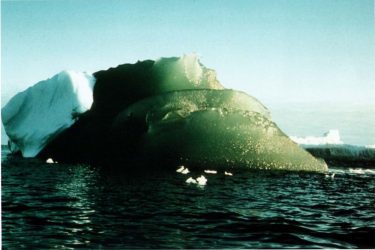
Research led by the UW’s Department of Atmospheric Sciences proposes a new idea that may explain why some Antarctic icebergs are tinged emerald green rather than the normal blue, potentially solving a decades-long scientific mystery.
Most icebergs appear white or blue when floating in seawater, but since the early 1900s, explorers and sailors have reported seeing peculiar green icebergs around certain parts of Antarctica. Now, glaciologists suspect iron oxides in rock dust from Antarctica’s mainland are turning some icebergs green. They formulated the new theory after Australian researchers discovered large amounts of iron in East Antarctica’s Amery Ice Shelf.
If experiments prove the new theory right, it would mean green icebergs are ferrying precious iron from Antarctica’s mainland to the open sea when they break off, providing this key nutrient to the organisms that support nearly all marine life. Iron is a key nutrient for phytoplankton, microscopic plants that form the base of the marine food web. But iron is scarce in many areas of the ocean.
“It’s like taking a package to the post office. The iceberg can deliver this iron out into the ocean far away, and then melt and deliver it to the phytoplankton that can use it as a nutrient,” said lead author Stephen Warren, a glaciologist and professor emeritus in the UW’s Department of Atmospheric Sciences. “We always thought green icebergs were just an exotic curiosity, but now we think they may actually be important.”
The study is published in the Journal of Geophysical Research: Oceans, a journal of the American Geophysical Union.
Read more at UW News »
